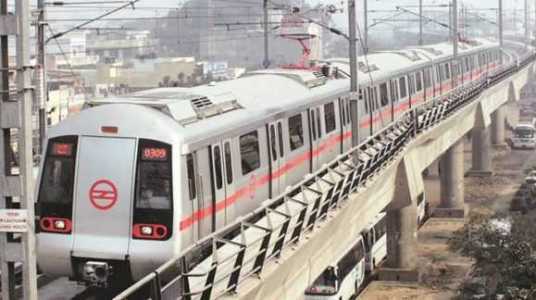
DMRC started full signaling trials on a 20 km-long stretch between Durgabai Deshmukh South Campus (near Dhaula Kuan) and Majlis Park on the upcoming Majlis Park – Shiv Vihar corridor of Delhi Metro (Pink Line). These trials will test maximum automation of the new Metro trains, equipped with Unattended Train Operations (UTO) and the new age CBTC (Communication Based Train Control) signaling system which will enable the movement of trains with a frequency of about 90 to 100 seconds, thus significantly enhancing the carrying capacity of the Delhi Metro system, a DMRC spokesperson said.
The train will run on the UTO mode to check how the new trains are coordinating with the new signaling technology. This is also the first time that such a long section is being tested in one go. Signalling trials on this section is a significant step ahead towards the eventual commissioning of the stretch since signaling trails are started after the completion of all civil and ancillary works. Trial runs were started between Mayapuri and Shakurpur (6.5 kms) on this corridor in June, while last month, a Metro train had passed through the Delhi Metro system’s highest point at Dhaula Kuan for the first time. This 20 km long stretch is extremely important from the point of view of enhancing connectivity along the arterial Ring Road. The section has 12 stations (8 elevated and 4 underground) including four interchange stations. The interchange stations will be Dhalua Kuan and Durga Bai Deshmukh South Campus (connectivity with Airport Line through Foot Over Bridge), Rajouri Garden (connectivity with Dwarka – NOIDA/ Vaishali Blue Line), Netaji Subhash Place (connectivity with Dilshad Garden – Rithala Red Line) and Azadpur (connectivity with HUDA City Centre – Samaypur Badli Yellow Line). With the commencement of trials today, regular trials will also begin through Delhi Metro’s highest point at Dhaula Kuan at a height of 23.6 metres (as high as a seven-storey building).
Construction of this stretch above flyovers and the viaduct of the Airport Express Line was a major engineering achievement. The stretch is also adorned by many other engineering landmarks such as the four steel bridges at Mayapuri, Rajouri Garden, Shakurpur and Punjabi Bagh. Two other bridges have also been built using the Cantilever Construction (CLC) technology at Mayapuri and ESI Hospital. Another major challenge encountered on this stretch was at Rameshwar Nagar, where a mid shaft had to be created to retrieve four Tunnel Boring Machines (TBMs) since two TBMs got stuck in 2014 due to unexpected rocky terrain. The shafts were created in an extremely congested area. The 59 km long Majlis Park – Shiv Vihar Metro corridor will be Delhi Metro’s longest Metro corridor. It will primarily cater to the city’s Ring Road and will form a circular ring of Metro connectivity criss-crossing all the other operational Metro corridors.
The line is planned to be opened in stages by March, 2018 (except Trilokpuri to Mayur Vihar Pkt-1 section due to land issue at Trilokpuri). The section from Majlis Park to Durgabai Deshmukh South Campus is expected to be completed by December, 2017 and sections from Durgabai Deshmukh South Campus to Mayur Vihar Pkt-1 and Trilokpuri to Shiv Vihar are expected to be completed by March 2018. Signaling trials are in progress between Botanical Garden and Kalkaji Mandir stations and between Janakpuri West and Terminal 1, IGI Airport stations on the Janakpuri West – Botanical Garden corridor (Line 8) also called the Magenta Line. Operations are expected to begin between Botanical Garden and Kalkaji Mandir by October end.



Leave a Reply
You must be logged in to post a comment.